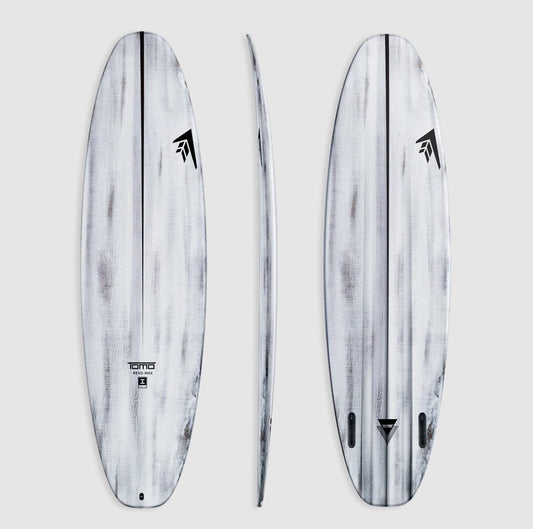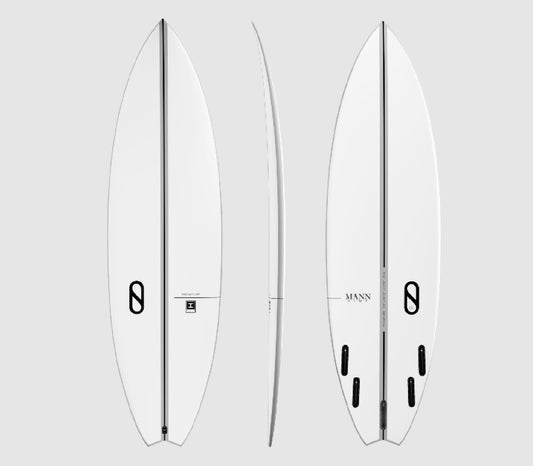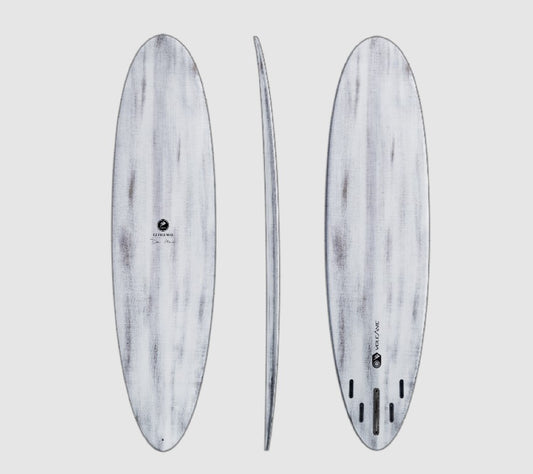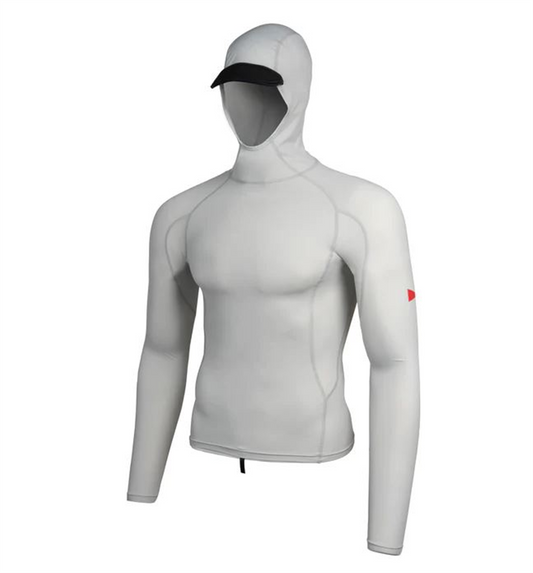6 Skateboarding Safety and Injury Prevention Tips
Skateboarding is an exhilarating sport that offers both great exercise and a chance to master sick tricks while being part of a community with similar interests. However, as with all sports, skateboarding has its fair share of safety risks—especially for beginners or those attempting new tricks. Concrete is not very forgiving! Understanding skateboarding risks and learning how to prevent injuries with skate protective gear is vital for skaters of all ages and skill levels. So then you can continue taking a freeride for much longer
Whether you are a seasoned skater or just starting, join us as we cover some crucial knowledge and skills needed to enjoy skateboarding safely and confidently. Read on and hit those kickflips with effortless ease.

What Are the Risks?
Riding a skateboard requires skill, good balance and good reflexes and any error can cause you to fall, leading to musculoskeletal injuries like fractures and sprains, or even concussions and more serious head injuries. Potentially fatal head injuries can occur without proper helmet use, falling on to outstretched arms can lead to upper limb injuries and there are multitudes of ways to damage you lower limbs. Collisions with fixed objects or pedestrians pose further injury risks to skateboarders and others.
If you or someone you witness has sustained a serious skateboarding injury, do not hesitate to perform general first aid and call 111 immediately if necessary. You can prevent potential injuries for yourself and others by staying vigilant and practising safety measures like the ones we are about to list.
1. Gear Up
To prevent injuries and stay safe, equip yourself with essential skateboarding safety gear:
- Skateboard Helmet: A properly fitting skateboard helmet protects the head during falls or collisions, helping prevent concussions and more severe, potentially fatal head injuries.
- Knee and Elbow Pads: Knee pads provide protection for the knees and give you something more safe to fall onto, reducing the risk of abrasions, ligament damage and fractures. Elbow pads support and safeguard the elbows from impact injuries and soft tissue abrasions.
- Wrist Guards: Wrist guards help prevent wrist sprains and fractures, common injuries during falls when skateboarders instinctively use their hands to break the impact. A Colles fracture at the wrist is one of the most common boney injuries, protection can help lessen the risk.
- Proper Footwear: Good quality skateboarding shoes from the likes of DC and Globe with durable outsoles and impact resistance in the inner soles can make your skateboarding way safer and less painful!
- Clothing: Appropriate clothing can also give some protection to your skin from abrasions.
- Reflective Gear: When skateboarding in low-light conditions, wear reflective clothing or accessories to enhance visibility to others.

When looking for high-quality protective skate gear, Pro-Tec is your best bet to cover all bases. They have established themselves as a trusted choice with a strong focus on safety and innovation. Pro-Tec offers a range of helmets, knee and elbow pads, and wrist guards designed to minimise the risk of injuries during skating activities.
2. Check Your Skateboard
A well-maintained skateboard ensures an unbeatable skating experience and a safer, more enjoyable ride. To maintain your skateboard, do the following:
- Check your deck after hard landings for signs of cracking.
- Maintain the tightness of your trucks at a level you feel best at.
- Inspect wheels for uneven wear or damage.
- Maintain clean and lubricated bearings. Replace them if they are grinding or not running smoothly
- If you’ve had your board for a while and the griptape is wearing consider getting a new sheet.
- Check tightness of all hardware.

Any signs of weakness could compromise the safety of your board, and you should problems before they become an issue. Skateboard maintenance is pretty easy compared to technical products in other sports. We recommend storing your board in a dry location, unexposed to the outdoors. Avoid skating in wet conditions to prevent damage to the deck and bearings.
3. Choose a Safe Skateboarding Location
Whenever possible, skate in designated skate parks. Skate parks are purpose-built with various features and obstacles specifically designed for skateboarding. They offer a controlled environment dedicated to skating, with smooth surfaces and safety measures to ensure a safer and more enjoyable experience. You are also at less risk of other hazards like pedestrians, bikes and vehicles. If you're in the Gisborne area, we recommend checking out the newly redeveloped Alfred Cox skatepark. It's considered one of the best in New Zealand and has a thriving skate community.
Avoid areas with heavy foot traffic to ensure convenience and safety for skateboarders and pedestrians when skating outside dedicated skate parks. Skateboarding in the CBD of a lot of New Zealand towns is generally not permitted. Familiarise yourself with local regulations and laws regarding skateboarding. Some areas may have specific rules about where skateboarding is permitted, and non-compliance could result in fines or penalties. Although you can skate on roads in New Zealand following the road code, steer clear of busy streets, intersections, and high-traffic areas to reduce the risk of accidents with vehicles or pedestrians.
4. Get Loose
Like any sport its wise to warm up a bit before going hard! Stretching after warming up has been shown in multitudes of studies to decrease the risk of sporting injuries. Pre-skate warm-ups prepare the body before physical activity and increase blood flow to muscles and joints.
Raise your heart rate and the blood flow to your extremities by doing sport specific movements or even doing some more gentle skating before going hundy. Stretching exercises further aid injury prevention by improving flexibility and range of motion.

Focus on stretching major muscle groups used when skating. Dynamic stretches and movements are ideal for warming up and activating the muscles. Static stretches held for 15-30 seconds also help release muscle tension and promote better performance.
5. Proper Skateboarding Techniques
While we all want to show off some great tricks, you need to be able to walk before you run. Skateboarding is a highly skilled sport where the sky is the limit but it’s a process of time and effort and progressing through more simple moves to reach your goals. Start off by sticking to what you know, before progressing to new, more complicated and therefore risky tricks.
Fall Safely
Learning to fall correctly can save you from a whole lot of grief. Understanding fall safety can help prevent serious injuries in a pinch and teaches your body not to panic, allowing you to protect yourself in sudden situations.
If you find yourself falling, try to roll with the fall, distributing impact across your moving body instead of landing on one specific area at a dead stop and full impact. Try not to land on your outstretched hands, which can lead to wrist injuries. Instead, aim to either roll or land on your protective gear e.g on a halfpipe when you bail aim to slide down the ramp on your kneepads.
Nail the Stance
A proper stance is fundamental for control and stability. And relaxing gives your body more degrees of freedom and less rigidity. If you're a beginner, start by standing with your feet shoulder-width apart and perpendicular to the skateboard, keeping your knees slightly bent. The more time you put into skating the more relaxed you’ll be and less prone to being put off by small errors.
Find your comfortable stance, whether regular (left foot forward) or goofy (right foot forward), and practice balancing on the board while stationary. Once you feel confident, push off gently with one foot to move forward.
Common Etiquette Rules for Skating in Public Spaces
Always respect other skaters; be patient when waiting for your chance to use obstacles. Observe the park's rules and guidelines, such as one rider at a time or designated lines for specific tricks. Maintaining a friendly and cooperative atmosphere fosters a safer and more enjoyable environment for everyone.
For more information on the proper skating techniques, helpful advice for beginners, and more, we suggest exploring valuable online skateboarding resources.

6. Avoid Distractions
No matter how much skating experience you've had, getting distracted when you're on your board is too easy. Avoid multitasking when skating, as it poses significant hazards. Be aware of other people and potential hazards. Limit phone usage to prevent distractions from texting or checking social media while skateboarding. Don’t skate under the influence of alcohol or drugs, as it can impair coordination, judgement and reflexes.

Stay Safe and Hit the Streets in Style
Whether you're a seasoned skater or a newcomer seeking safety advice, Blitz Surf Shop has you covered. As one of New Zealand's best surf and skate shops, we offer high-quality protective gear, skateboards, and trendy streetwear to have you skating in style. Start shopping today, or contact our friendly team for more information!




